The last secret of the Great Alexander: where did two thousand Macedonian ships go?
Categories: Africa | History | Nations | Travel | World
By Pictolic https://pictolic.com/article/the-last-secret-of-the-great-alexander-where-did-two-thousand-macedonian-ships-go.htmlBy the age of 30, Alexander, the son of King Philip of Macedon, had become the ruler of a vast empire from Greece to India. Even during his lifetime, his contemporaries called him the Great, and the Egyptian priests recognized him as the incarnation of the god Ammon. Alexander did not wear his nickname for nothing. The king dreamed of more and sought to conquer the western Mediterranean, which would make him the ruler of the entire then Oikumene.
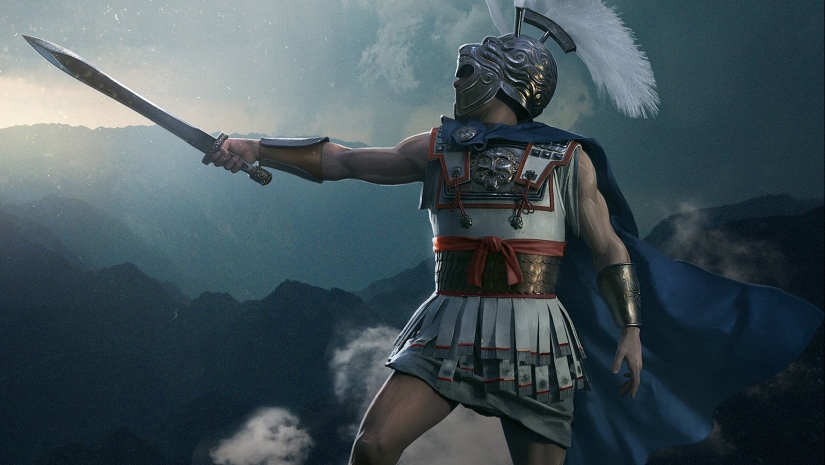
The main enemy of the Macedonians in the West was to be Carthage, for the war with which Alexander built two thousand ships. However, the king's plans were not destined to come true. On June 13, 323 BC, Alexander died at the age of 32. Hundreds of years later, historians are still arguing about where the huge fleet disappeared, which, on the orders of the king, set out from the harbor of Babylon on a campaign, but never came anywhere.
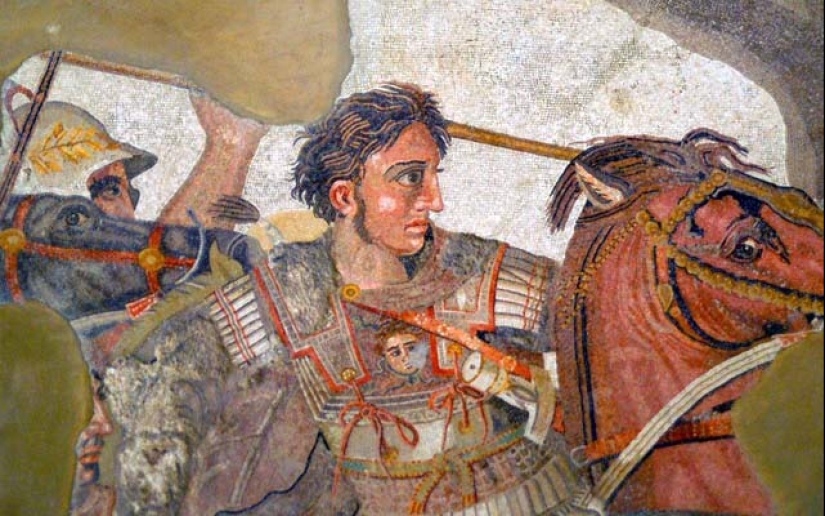
Portrait of Alexander the Great from a fresco created around 330 BC.
The ancient Greek historian Arrian wrote that the king set his fleet the task: to circumnavigate Arabia, Numidia, through the Pillars of Hercules (the Strait of Gibraltar) to enter the The Mediterranean Sea and strike Carthage from the East, while it attacks from the West. A victory over such a strong opponent would have made Alexander the true king of the entire known world.
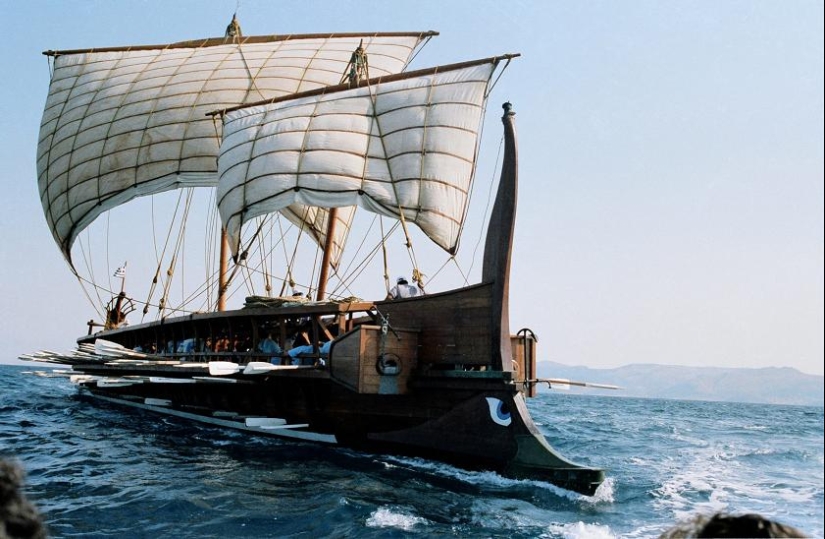
Modern reconstruction of the Alexander the Great Trier
The fleet consisted of 80 military thirty-oared triers and 1,900 supply freighters carrying food, water, equipment, horses, and warriors. Each trier had 170 rowers and 30 armed Hoplite warriors. Alexander appointed Admiral Nearchus, who was a close associate of the tsar and his childhood friend, as the commander of the fleet. He was famous for his rare courage, coolness and skill as a navigator.
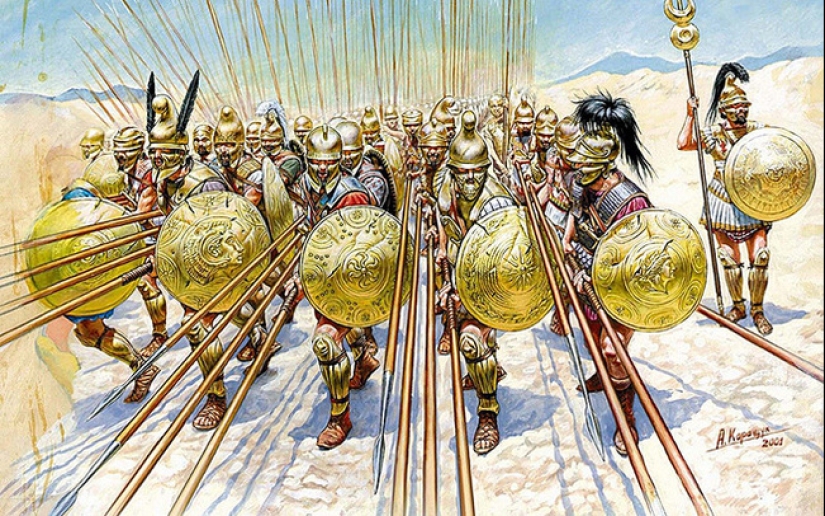
Macedonian phalanx in battle
It is assumed that in addition to sailors and soldiers, on board the ships of the flotilla could be artisans, young girls and boys for the organization of colonies, as well as scientists who record the discoveries of the Macedonians on the way.
Researcher Andrey Dybovsky concluded that Nearchus and his fleet, sailing along the coast of Africa, fell into one or more navigation traps-a combination of natural factors that are very likely to lead to an imperceptible deviation from the course. For example, walking along the coast in an unfamiliar sea, the Macedonians did not take into account the local currents, which gradually led them away from their planned route.
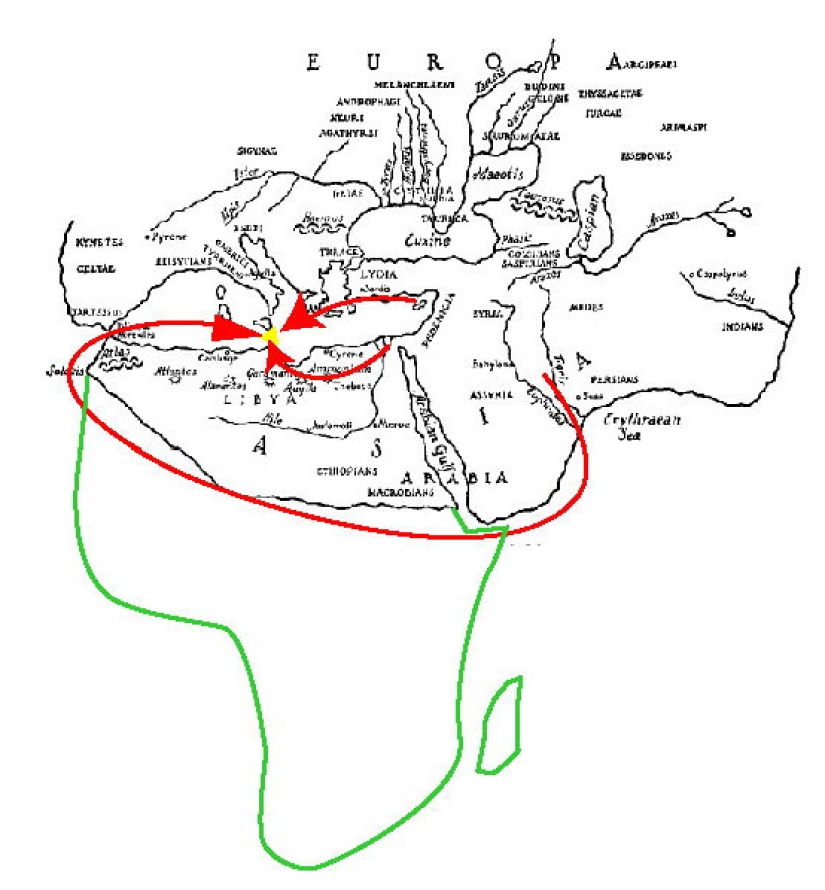
The ideas of the world at that time and the plan of attack on Carthage
An astronomical error, optical deception, an oncoming current, the release of a large mass of water from rivers that imperceptibly knock ships off their original course, and much more could prevent them from circumnavigating Africa. For various reasons, the Macedonians moved away from the coast and went out into the open ocean, where they either drowned or reached the coast of South America.
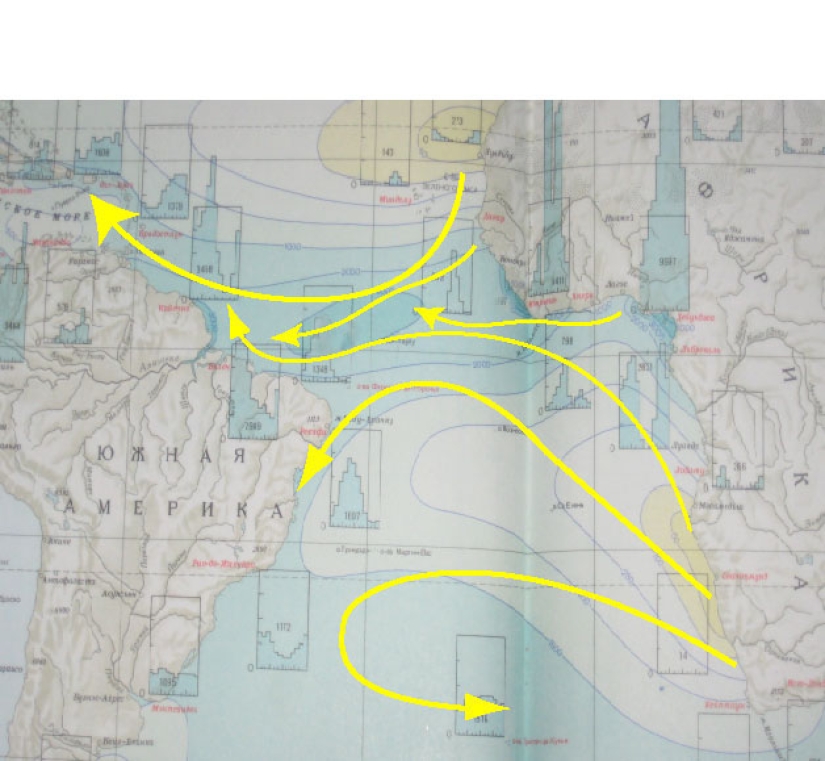
Possible path of the Nearchus fleet in case of a navigational error
The fastest current in the Atlantic over the Rovshan tectonic fault could carry ships to the island of Fernando de Naronha, which is only 200 miles from the coast of South America. Local westerly winds blowing towards the unknown continent could also contribute to the movement in this direction. The Macedonians were devout people, and when they lost their course, they could perceive the west wind blowing in their sails as the will of the gods, which they must trust.
When the Macedonian fleet reached South America, before setting foot on new shores, sailors and soldiers put on their heads helmets, copies of which were later worn by the Mochika tribes. Researchers of Native American cultures noted that the aborigines had strong braided headdresses with curved crests, which are very similar to the metal helmets of the time of Alexander the Great.
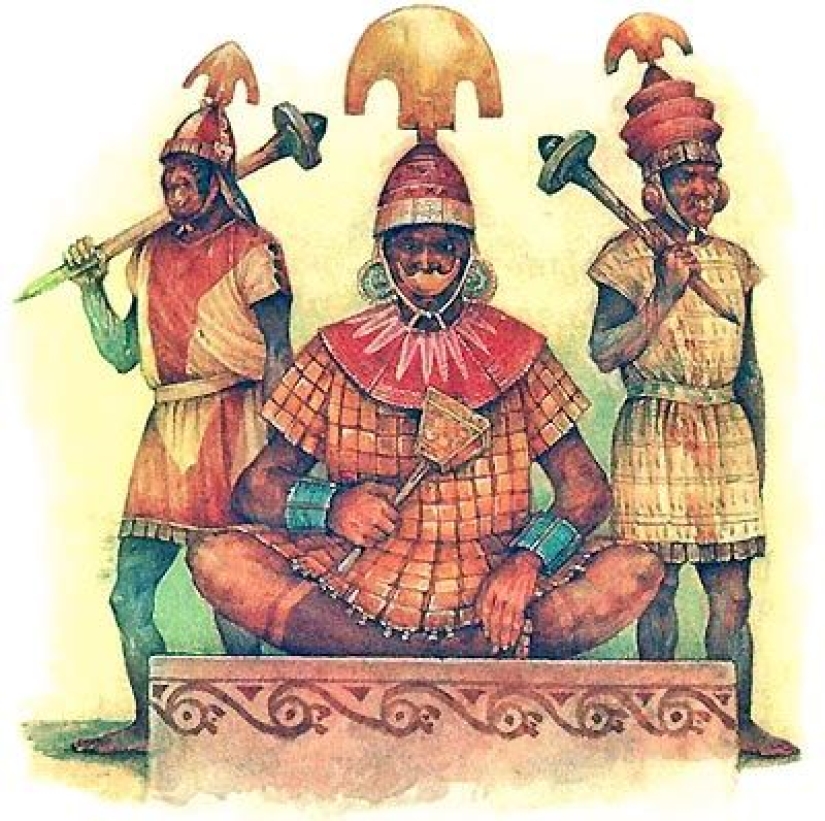
Mochika Warriors
Indirect evidence of the contact of the Indians with the carriers of the Hellenistic culture, scientists call similar games, common both in the ancient Mediterranean and in the Middle East. America.
South American Bamboo Flute
Another proof was the pipe-a favorite musical instrument of the ancient Hellenes. On the territory of modern Colombia, Panama and the Solomon Islands, pipes were found that do not differ from the Greek ones.
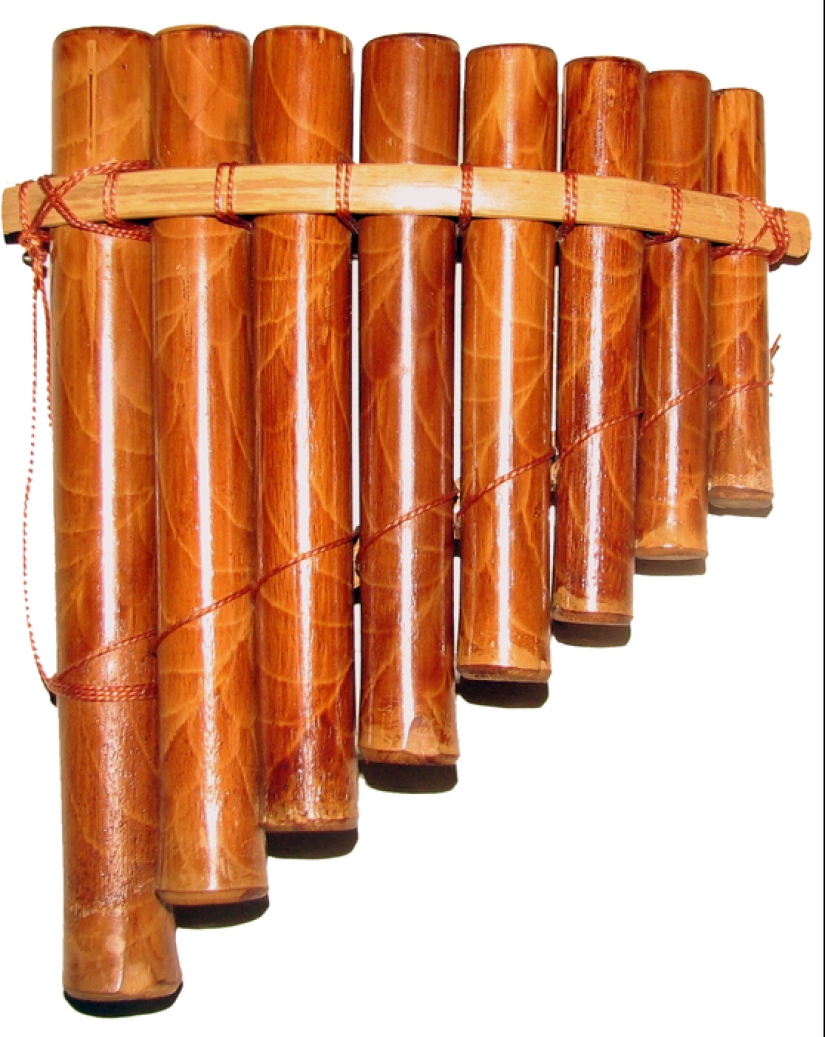
Greek flute
Archaeologists found in Mexico loom, the device of which completely repeated the ancient Greek counterpart. Supporters of this version have recorded hundreds of evidence of the intersection of Hellenic and Indian cultures.
The wildest guess about where the fleet and several tens of thousands of people disappeared was made by two American archaeologists Harold Gladwin and Constance Irwin. Scientists believed that the ships of Nearchus, due to the June monsoons in the Arabian Sea, turned not to the west, heading for Africa, but to the east, to India, where the sailors replenished their supplies and picked up the soldiers left there after Alexander's campaign.
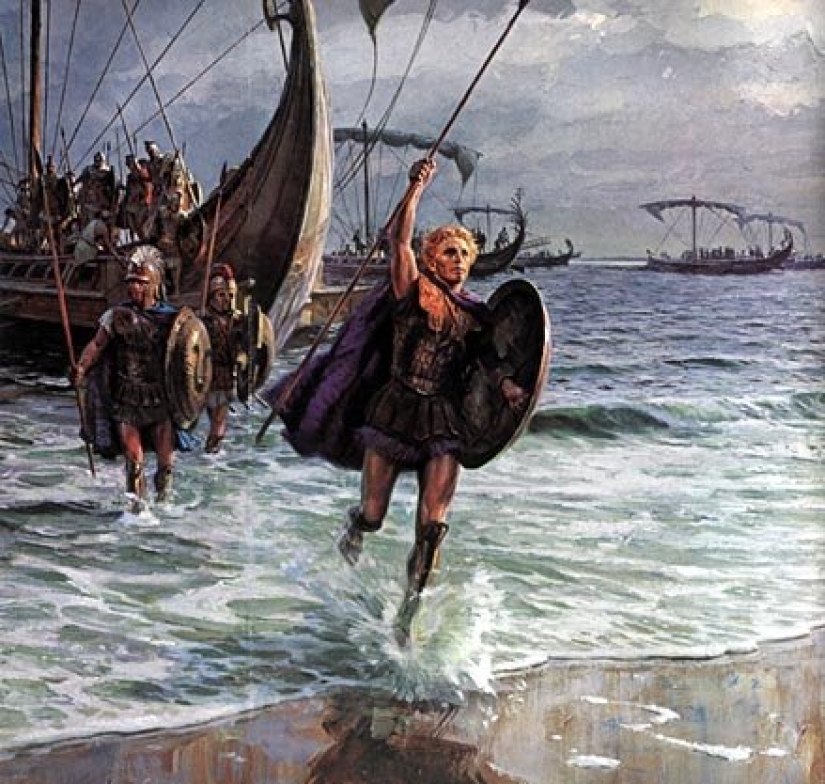
From India, the ships went to Burma and moved south, along the Mallaka Peninsula. From there, the fleet turned east and, without losing sight of the northern coast of Sumatra, went to the islands of Indonesia. The flotilla's route lay to New Guinea and the islands of Polynesia. Eventually, the fleet crossed the Pacific Ocean and reached the coast of South America. The entire journey lasted 25 years, and during this time many sailors and soldiers died, but their place was taken by the inhabitants of the tribes that met on the way who joined the navigators.
Previously, history was dominated by "isolationists" who believe that civilizations on different continents did not touch and developed independently of each other, but the discoveries and experiments of recent decades have changed the usual picture. The travels of the Norwegian Thor Heyerdahl on ancient ships showed that the people of the past, thanks to the ocean currents, could pass through the vast expanses of the sea for huge distances.
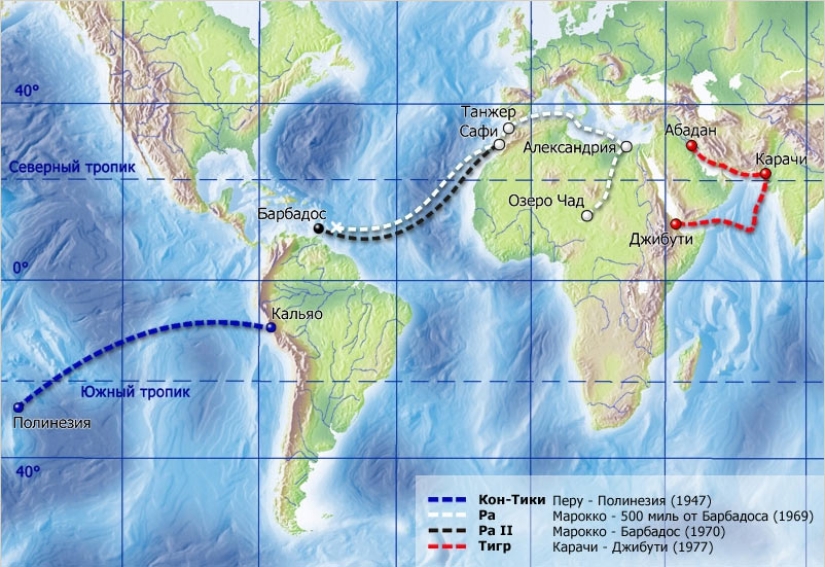
Heyerdahl Tour Route Map
The first Europeans who found themselves on the Polynesian islands were surprised by the presence of a large number of blonds among the natives. So, on Tongo, there were 10% of fair-haired people, and the neighboring island of Moorea was generally called by local peoples "the island of fabulous people with golden hair". Blonds also prevailed on the New Zealand island of Tureho. Studying this phenomenon, the famous Norwegian researcher Thor Heyerdahl believed that in the past, the islanders had contact with the European people, who gave them blonde hair.
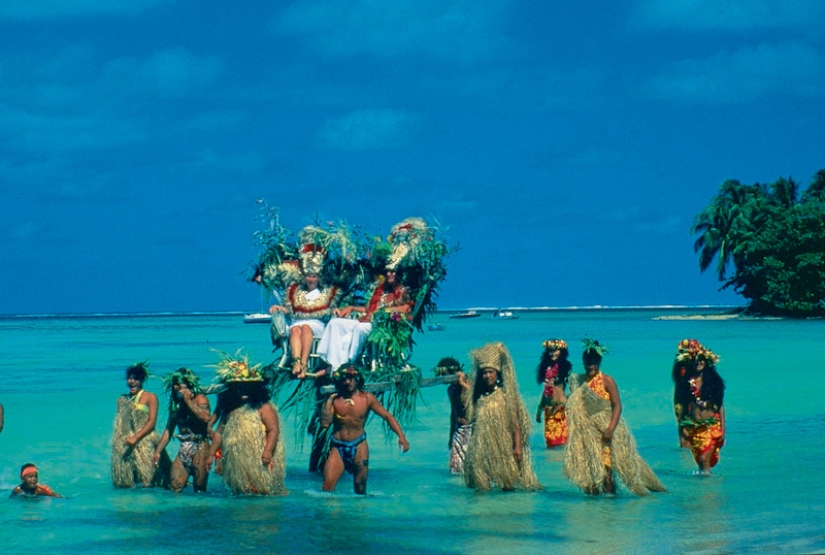
Moorea Island
The special place of astrology in the culture of the Greeks and Polynesians is also interesting. The islanders used very similar means of determining the position of the stars and their meaning to humans. Like the Greeks, the Polynesians had the art of navigating the stars, which allowed them to swim in the ocean for several thousand miles and easily navigate, finding their tiny islands among the vast expanses of water.
The famous American researcher Joseph Campbell compared the Polynesian oral traditions with Homer's "Iliad" and "Odyssey" and came to the conclusion that they are very similar. The biggest surprise was prepared by the Hawaiians. When Captain Cook first entered Hawaii, he was surprised by the headdresses of the local warriors, strikingly similar to the helmets of the Greek and Macedonian Hoplites.
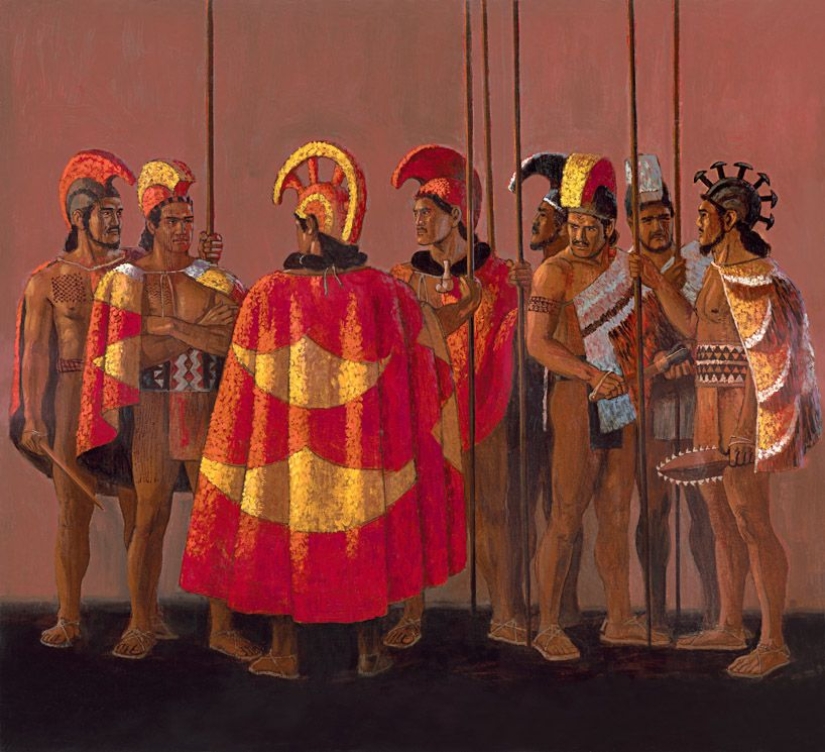
Warriors of the Hawaiian Koa tribe
A helmet with a crest of bird feathers was called a machiole and was considered a symbol of the upper ruling class, and it was allowed to wear such a headdress only together with a tunic-cloak. Surprisingly, the warriors of the Hawaiian Koa tribe, like the Hellenes, fought in a close phalanx and armed with long spears. Against the background of such coincidences, there was a theory that the Nearchus fleet or part of it still sailed to Polynesia and conquered the local population.
Hawaiian Phalanx
The small number of newcomers became the highest stratum of society and married local women. Years passed, and the Greeks, Macedonians,Phoenicians, Egyptians disappeared into the numerous environment of the islanders, and their great-grandchildren forgot the past of their ancestors, but retained a high status, the symbol of which was the battle helmet of the hoplite. Metal helmets "ate time", and the descendants of the aliens began to make copies of them out of wood, and instead of horse hair, bird feathers were woven into the comb.
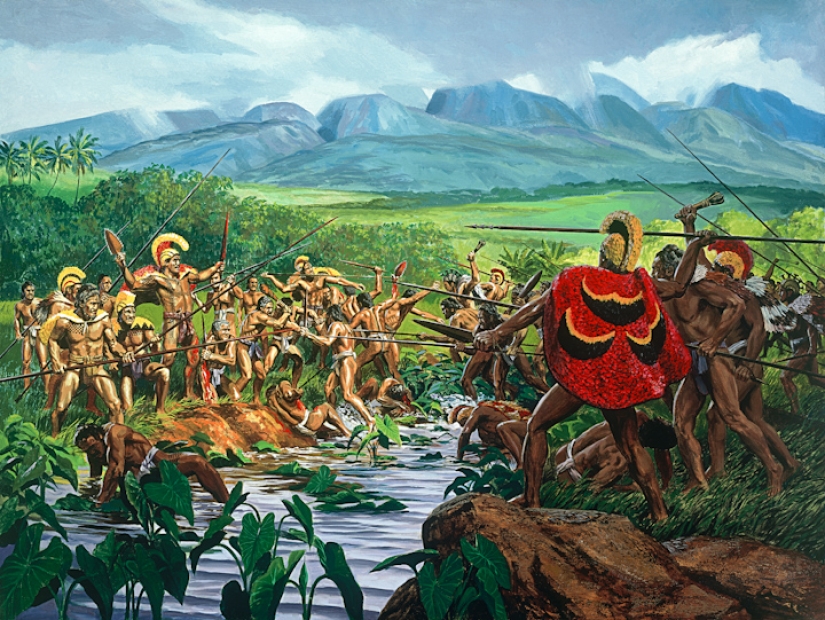
American archaeologist Stoddard Lothrop and Doctor of Historical Sciences Valery Gulyaev, a lifelong student of ancient civilizations, consider Gladwin's theory unfounded. Referring to They believe that Nearchus did not disappear anywhere, but became the satrap of the provinces of Lycia and Pamphylia (the southern coast of modern Turkey) and took part in the war for the succession of Alexander on the side of the general Antigonus the One-Eyed.
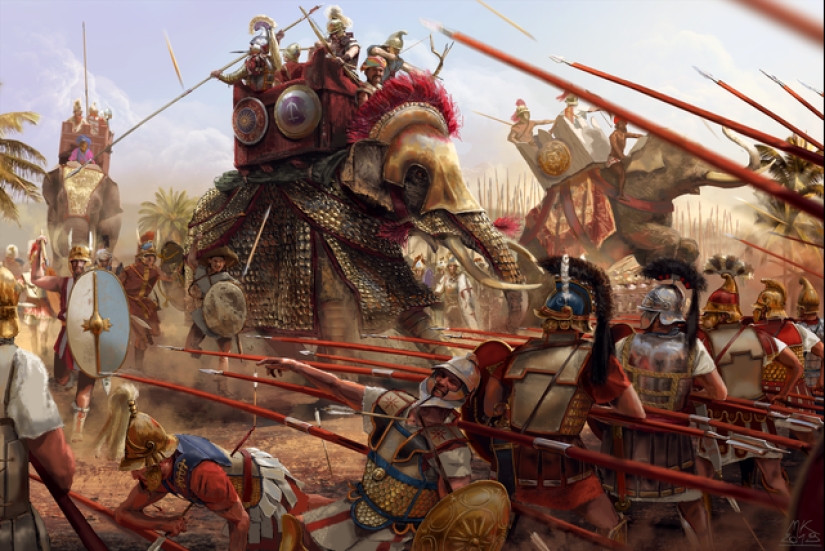
Each of the stories has its own strengths and weaknesses, and they can only be proved or disproved by the joint work of archaeologists, ethnographers, linguists and professional sailors who are able to assess the capabilities of ancient ships not in theory, but in practice. History holds many secrets, the discovery of which is yet to come. For example, according to the latest data, the Egyptian Sphinx was built long before the pyramids that it protects.
Recent articles

If your workplace is not a sofa, and your suit — pajamas (this means that you are not a freelancer), then you know exactly what ...

Charlie Chaplin is known throughout the world; his career as a silent film actor lasted 75 years, ending with his death. Chaplin ...

In the noughties, fearless American photographer Bruce Gilden, known for his shooting of "street life", went to the Urals. --> In a ...